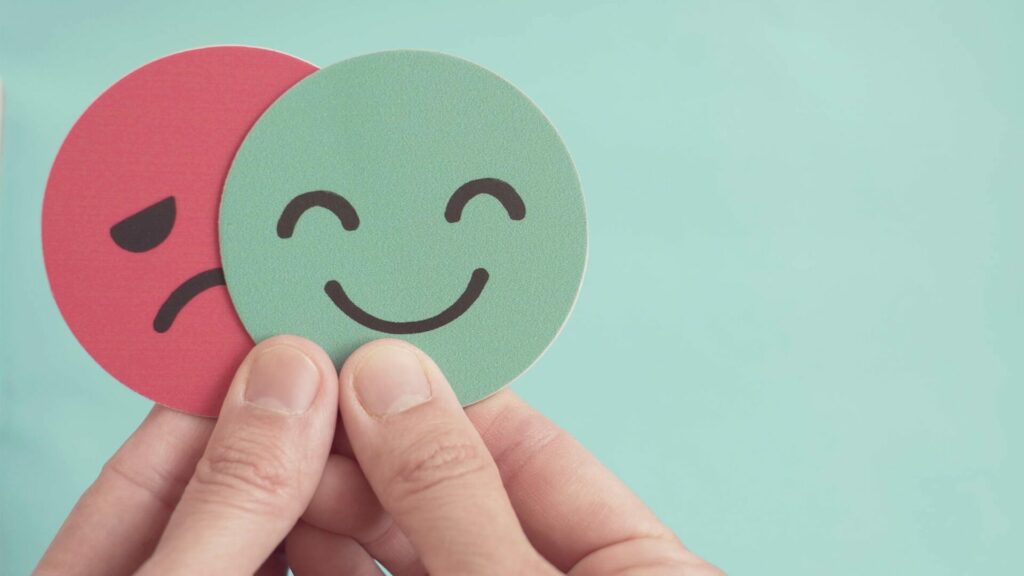Cyclothymic bipolar disorder is a mental illness that is characterized by periods of elevated moods and periods of depression. The symptoms can be very mild at times, but they can also be severe enough to interfere with daily life. If you or someone you know is suffering from cyclothymic bipolar disorder, it is important to get help. This comprehensive guide will give you all the information you need to understand this condition and seek treatment.
Contents
Defining Cyclothymic Bipolar Disorder
 Bipolar disorder, to name it, makes a person thin of two poles: high and low. Cyclothymic bipolar disorder is a milder form in the bipolar family, but its symptoms are still disruptive. Like other types of bipolar disorder, people with cyclothymia experience episodes of mania or hypomania (abnormally elevated or irritable moods) and depression. The main difference is that the symptoms are not as severe as other types of bipolar disorder, and the person doesn’t experience full-blown manic episodes or deep depression that mark other types.
Bipolar disorder, to name it, makes a person thin of two poles: high and low. Cyclothymic bipolar disorder is a milder form in the bipolar family, but its symptoms are still disruptive. Like other types of bipolar disorder, people with cyclothymia experience episodes of mania or hypomania (abnormally elevated or irritable moods) and depression. The main difference is that the symptoms are not as severe as other types of bipolar disorder, and the person doesn’t experience full-blown manic episodes or deep depression that mark other types.
This is also known as bipolar 2, indicating that there are two “poles” of mood, but the person never experiences a full manic episode (bipolar I).
For some people, the episodes may be so mild that they go unnoticed. In other people, the symptoms can be disabling and make it hard to function at work or school, or to maintain healthy relationships.
Cyclothymia is a chronic condition, which means that it lasts for a long time and usually requires lifelong treatment. Without treatment, cyclothymia can worsen and lead to more serious bipolar disorder.
Signs And Symptoms
The tell-all signs of cyclothymic bipolar can be tough to categorize as they can be easily confused with those of other conditions like major depressive disorder (MDD) or attention deficit hyperactivity disorder (ADHD).
The main symptoms are elevated moods or irritability that lasts for at least two weeks and is different from the person’s usual mood. During this time, the person experiences three or more of the following symptoms:
- Decreased need for sleep
- Excessive energy or activity levels
- Unusual talkativeness
- Racing thoughts
- Distractibility
- Poor concentration
- Impulsivity or engaging in risky behaviors
After the period of elevated mood, the person experiences a crash or “low” period that lasts at least two weeks and is different from the person’s usual mood. During this time, the person experiences three or more of the following symptoms:
- Fatigue or low energy levels
- Increased need for sleep
- Depressed mood
- Feelings of hopelessness or worthlessness
- Loss of interest in activities that used to be pleasurable
- Trouble concentrating
- Unintentional weight gain or loss
- Body aches and pains with no known cause
It can be hard to keep track of all these symptoms, but it’s important to do so. Why? Because cyclothymia doesn’t simply go away on its own- it’s a chronic condition that requires lifelong treatment.
Causes And Risk Factors
There is no hardcore evidence as to what causes cyclothymic bipolar disorder. However, like other mental illnesses, it is likely caused by a combination of genetic and environmental factors.
Cyclothymia often runs in families, so there may be a genetic predisposition for the condition. But it’s not clear how much genetics plays a role.
Environmental factors may include stress, trauma, and major life changes. These can trigger episodes of mania or depression.
It’s also important to note that people with cyclothymic bipolar disorder are at a higher risk for developing other mental health conditions, such as anxiety disorders, substance use disorders, and eating disorders.
The symptoms of cyclothymia usually first appear in adolescence or early adulthood. These may be overlooked in instances of undiagnosed ADHD. For women, the symptoms may be mistaken for PMS or menopause. However, it’s important to get a proper diagnosis as soon as possible so that you can begin treatment.
Effects On Life
The dangers of a disorder as unpredictable and severe as cyclothymic bipolar should not be underestimated.
People with the condition are at a higher risk for developing substance abuse problems, as well as suicidal thoughts and behaviors. In fact, about 30-50% of people with bipolar disorder attempt suicide at least once in their lifetime.
Cyclothymia can also lead to problems at work or school, as well as in personal relationships. The symptoms can make it hard to concentrate, stay organized, and meet deadlines. This can lead to job loss, poor grades, and strained relationships.
In more dire and unmonitored consequences, there can also be an involvement of legal and financial problems. The impulsivity that is symptomatic of cyclothymia can result in risky behaviors, such as spending sprees, unprotected sex, and driving under the influence. These can lead to financial instability, legal trouble, and health complications.
The good news is that cyclothymic bipolar disorder is treatable. With the right treatment plan, people with the condition can live to the fullest!
Diagnosis
 The DSM-5, the diagnostic manual used by mental health professionals, lays out specific criteria for diagnosing cyclothymia.
The DSM-5, the diagnostic manual used by mental health professionals, lays out specific criteria for diagnosing cyclothymia.
- To be diagnosed with cyclothymia, a person must have had periods of both hypomanic and depressive symptoms that last for at least two years (one year in children and adolescents). The symptoms must also be present more days than not during this time.
- In addition, the symptoms must not be due to the use of drugs, alcohol, or another medical condition. And they must cause significant distress or impair the person’s ability to function in their everyday life.
- The symptoms must also not be in response to a major life event, such as the death of a loved one. They should also be in isolation to other disorders or mental illnesses.
If you think you or a loved one may have cyclothymia, it’s important to see a mental health professional for an accurate diagnosis. They will likely ask you about your symptoms and family history. They may also give you a physical exam to rule out other potential causes of your symptoms, such as a thyroid condition.
Treatment Options
Cyclothymic bipolar disorder is a chronic condition that requires lifelong treatment. The goal of treatment is to reduce the severity and frequency of symptoms and help the person function in their everyday life. Since there is no cure for cyclothymia, the main objective of the treatment is to provide symptom relief.
Professional intervention
Help from a mental health professional is the first step to a successful treatment plan. A therapist can help you understand your condition and work with you to develop healthy coping mechanisms. They can also provide support and guidance during tough times.
- Psychotherapy, also known as talk therapy, is the most common form of treatment for cyclothymia. It involves meeting with a therapist on a regular basis to discuss your symptoms, thoughts, and feelings.
- Cognitive behavioral therapy (CBT) is a type of psychotherapy that is particularly effective in treating cyclothymia. CBT focuses on helping you change negative thought patterns and behaviors that contribute to your symptoms.
- While there is no specific medication for cyclothymia, certain drugs can help stabilize your mood and relieve symptoms. Antidepressants are often prescribed to treat the depressive episodes associated with cyclothymia. These medications can help improve mood, sleep, and appetite. Mood stabilizers, such as lithium or valproate, are also commonly used to treat cyclothymia. These drugs can help prevent manic and depressive episodes.
- In severely dangerous or life-threatening cases, electroconvulsive therapy (ECT) may be used. ECT is a procedure that uses electrical stimulation to the brain to help relieve symptoms.
Cyclothymia can be a difficult condition to live with, but treatment can make a big difference. With the help of a mental health professional, you can develop healthy coping mechanisms and reduce the frequency and severity of your symptoms.
Self-help
 Self help can also be an important part of your treatment plan. There are a number of things you can do on your own to help relieve symptoms and improve your mood.
Self help can also be an important part of your treatment plan. There are a number of things you can do on your own to help relieve symptoms and improve your mood.
- Regular exercise is a great way to boost your mood and energy levels. It can also help reduce stress and anxiety.
- Eating a healthy diet is also important. Eating nutritious foods can help improve your mood and energy levels.
- Getting enough sleep is also crucial for managing cyclothymia. Make sure to get at least eight hours of sleep each night.
- Avoiding alcohol and drugs is also important. Substance abuse can trigger manic or depressive episodes and make symptoms worse.
- You may also consider keeping track of your mood and symptoms. This can be done in a journal or by using a mood tracking app. Tracking your symptoms can help you and your mental health professional identify patterns and triggers.
- Another great tip to manage cyclothymia is to connect with others. talking to friends and family, or joining a support group can help you feel less alone.
Cyclothymia can be a difficult condition to live with, but treatment can make a big difference. With the help of a mental health professional and some self-care, you can reduce the frequency and severity of your symptoms. If you think you may be suffering from cyclothymia, reach out to a mental health professional today!
Conclusion
To conclude our blog post, we can affirm that cyclothymia is a difficult condition but it can be managed and dealt with the help of a mental health professional. If you or someone you know may be suffering from cyclothymia, don’t hesitate to reach out for help!
If you or someone you know is looking for psychological help, Therapy Mantra is here for you. We are the leading providers of online therapy and counseling. Our team of highly trained and experienced therapists can provide assistance at the most affordable rates. Contact us today to learn more about our services. You may also visit our website to book an online therapy session or download our free Android or iOS app for more information.


